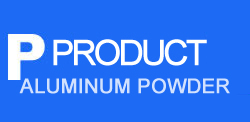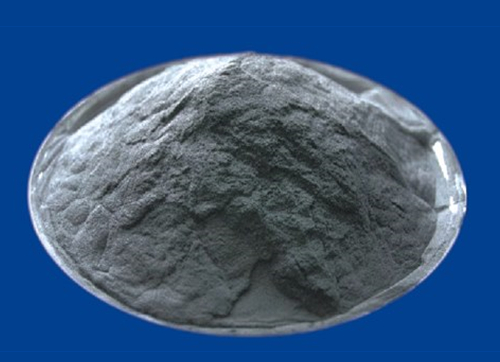Aluminum powder introduction
Aluminum powder, commonly known as "silver powder", is a silver metallic pigment. It is made by adding a small amount of lubricant to pure aluminum foil, crushing it into a scaly powder, and then polishing it. The aluminum powder is light in weight, has high floating power, strong hiding power, and has good reflectivity to light and heat. After treatment, it can also become non-floating aluminum powder. Aluminum powder can be used to identify fingerprints and can also be used as fireworks. Aluminum powder is one of the major aluminum powders in metal pigments due to its wide use, large demand and many varieties.
Aluminum powder, commonly known as "silver powder", is a silver metallic pigment. It is made by adding a small amount of lubricant to pure aluminum foil, crushing it into a scaly powder, and then polishing it. The aluminum powder is light in weight, has high floating power, strong hiding power, and has good reflectivity to light and heat. After treatment, it can also become non-floating aluminum powder. Aluminum powder can be used to identify fingerprints and can also be used as fireworks. Aluminum powder is a large category of metal pigments due to its wide use, large demand, and variety.
Aluminum powder characteristics
Aluminum is a silver-gray metal with a relative mass of 26.98, a relative density of 2.55, and a purity of 99.5%. The melting point of aluminum is 685 degrees, the boiling point is 2065 degrees, and the melting endothermic is 323kj/g. Aluminum is reductive and easily oxidized. During the oxidation process Exothermic. During rapid oxidation, 15.5 kj/g of heat is released per gram. Aluminum is a ductile metal and easy to process. The oxide film on the surface of metal aluminum is transparent and has good chemical stability.
Aluminum powder use
The aluminum powder particles used in the pigment are scaly, and it is precisely because of this scaly particle state that the aluminum powder has a metallic color and shielding function. The industrial production of metal aluminum powder has existed a long time ago. The early production method was the ramming method. The aluminum crumbs were placed in the groove of the punching machine, and the ramming pestle was driven by the machine to continuously punch the aluminum crumbs in the groove. The ductile aluminum gradually becomes flakes and shatters under impact. After the aluminum becomes very thin and small, it is screened, and the aluminum powder that meets the requirements is taken out as a product. The production efficiency of the ramming method is very low, the product quality is not easy to grasp, and there is a lot of dust in the production process, which is very easy to catch fire and explode. In 1894, German Hamtag used a ball mill to produce aluminum powder. Steel balls, aluminum scraps and lubricants were put into the ball mill, and the aluminum scraps were crushed by flying steel balls to become scaly aluminum powder, which was filled with inertness in the ball mill and the pipeline. Gas, this method is still in use, and is called "dry production." In 1910, J. Hall in the United States invented the addition of petroleum solvent to the ball mill instead of inert gas, and the produced aluminum powder was mixed with the solvent into a slurry to become a slurry aluminum pigment. This method is simple in equipment, safe in process, and the product is very convenient to use, and it is quickly adopted by countries all over the world. Most modern aluminum powder pigments use this method, which is also called "wet method". Aluminum powder is commonly called aluminum silver powder or silver powder because of its silver-white metallic luster. Its chemical composition is actually "aluminum", not "silver". Application scope: powder coatings, inks, plastic masterbatches, printing, imitation gold paper, imitation gold cards, gold film, textiles, but it will oxidize and turn black when used in water-based paints and acid-base paints. Not recommended for applications requiring acid and alkali resistance and combination with rainwater.
Extra-fine aluminum powder:
The grades are YL1, YL2, and the precision is 0.07~0. The raw material is pure aluminum ingot. Main use: It is mainly used as fuel for rocket propulsion in the aerospace industry, and also used as a primary raw material for military explosives.
Superfine aluminum powder:
The grades are YL1, YL2, the precision is 16~30μm, and the raw material is pure aluminum ingot. Main use: Used as a raw material for exterior metallic paint for high-end automobiles, mobile phones, motorcycles, and bicycles.
Steelmaking aluminum powder:
The grades are YL11, YL12, YL13, and the particle size is 0.35-0, which can be produced from scrap aluminum. Main purpose: steelmaking degassing and deoxidation.
Fine aluminum powder:
The grades are YL21, YL22, YL23, YL24, and the particle size is 0.35-0. Main purpose: used in chemical industry, fireworks and firecrackers, etc.
Fireworks aluminum powder:
The grades are YL1, FLMY2, YL3, YL4, and the particle size is 0.16~0. It can be produced from scrap aluminum. Main purpose: firework powder.
Coating aluminum powder:
Mainly used for industrial anti-corrosion, anti-rust and melting coatings, and the production of fireworks and firecrackers. The use of high-grade waste wires can produce ordinary paint aluminum powder.
Aluminum-magnesium alloy powder:
The grades are: YL1, YL2. Main uses: fireworks, firecrackers, military explosives.
Ball mill aluminum powder:
The grades are YL1, YL2, YL3, and the particle size is 0.08-0. Main purpose: used in chemical industry, casting, fireworks.
Aluminum powder use
The aluminum powder particles used in the pigment are scaly, and it is precisely because of this scaly particle state that the aluminum powder has a metallic color and shielding function. The industrial production of metal aluminum powder has existed a long time ago. The early production method was the ramming method. The aluminum crumbs were placed in the groove of the punching machine, and the ramming pestle was driven by the machine to continuously punch the aluminum crumbs in the groove. The ductile aluminum gradually becomes flakes and shatters under impact. After the aluminum becomes very thin and small, it is screened, and the aluminum powder that meets the requirements is taken out as a product. The production efficiency of the ramming method is very low, the product quality is not easy to grasp, and there is a lot of dust in the production process, which is very easy to catch fire and explode. In 1894, German Hamtag used a ball mill to produce aluminum powder. Steel balls, aluminum scraps and lubricants were put into the ball mill, and the aluminum scraps were crushed by flying steel balls to become scaly aluminum powder, which was filled with inertness in the ball mill and the pipeline. Gas, this method is still in use, and is called "dry production." In 1910, J. Hall in the United States invented the addition of petroleum solvent to the ball mill instead of inert gas, and the produced aluminum powder was mixed with the solvent into a slurry to become a slurry aluminum pigment. This method is simple in equipment, safe in process, and the product is very convenient to use, and it is quickly adopted by countries all over the world. Most modern aluminum powder pigments use this method, which is also called "wet method". Aluminum powder is commonly called aluminum silver powder or silver powder because of its silver-white metallic luster. Its chemical composition is actually "aluminum", not "silver". Application scope: powder coatings, inks, plastic masterbatches, printing, imitation gold paper, imitation gold cards, gold film, textiles, but it will oxidize and turn black when used in water-based paints and acid-base paints. Not recommended for applications requiring acid and alkali resistance and combination with rainwater.
Extra-fine aluminum powder:
The grades are YL1, YL2, and the precision is 0.07~0. The raw material is pure aluminum ingot. Main use: It is mainly used as fuel for rocket propulsion in the aerospace industry, and also used as a primary raw material for military explosives.
Superfine aluminum powder:
The grades are YL1, YL2, the precision is 16~30μm, and the raw material is pure aluminum ingot. Main use: Used as a raw material for exterior metallic paint for high-end automobiles, mobile phones, motorcycles, and bicycles.
Steelmaking aluminum powder:
The grades are YL11, YL12, YL13, and the particle size is 0.35-0, which can be produced from scrap aluminum. Main purpose: steelmaking degassing and deoxidation.
Fine aluminum powder:
The grades are YL21, YL22, YL23, YL24, and the particle size is 0.35-0. Main purpose: used in chemical industry, fireworks and firecrackers, etc.
Fireworks aluminum powder:
The grades are YL1, FLMY2, YL3, YL4, and the particle size is 0.16~0. It can be produced from scrap aluminum. Main purpose: firework powder.
Coating aluminum powder:
Mainly used for industrial anti-corrosion, anti-rust and melting coatings, and the production of fireworks and firecrackers. The use of high-grade waste wires can produce ordinary paint aluminum powder.
Aluminum-magnesium alloy powder:
The grades are: YL1, YL2. Main uses: fireworks, firecrackers, military explosives.
Ball mill aluminum powder:
The grades are YL1, YL2, YL3, and the particle size is 0.08-0. Main purpose: used in chemical industry, casting, fireworks.
On the basis of standard specifications, we can provide customized aluminum powder according to customer requirements.

